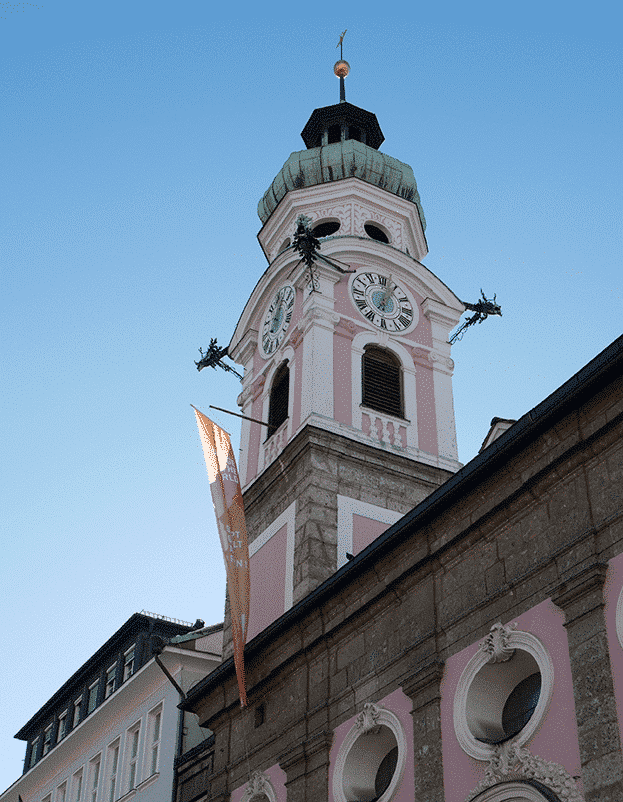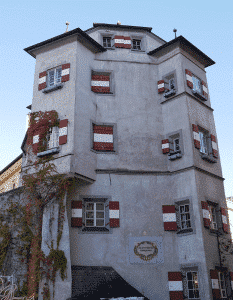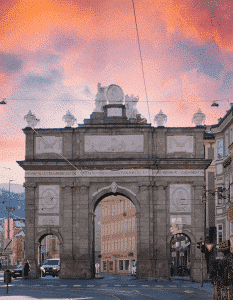Introduction to Maria-Theresien-Straße
Maria-Theresien-Straße is the vibrant heart of Innsbruck, Austria. This bustling street, named after Empress Maria Theresa who ruled Austria in the 18th century, serves as a cultural and commercial hub for locals and tourists alike. With its historic buildings dating back centuries, combined with modern shops and restaurants, it offers an eclectic blend of old-world charm and contemporary amenities.
Historical Significance
The history of Maria-Theresien-Straße stretches back hundreds of years. First mentioned in documents from the 1300s under its original name “Neue Straße,” this thoroughfare has always been a focal point for trade due to its strategic location connecting north-south trading routes through the Alps. The street was renamed in honor of Empress Maria Theresa in 1809 following her significant contributions towards urban development during her reign.
As you stroll down this iconic avenue today, you’ll be walking on layers upon layers of history. From medieval times until now, every era has left its mark on Maria-Theresien-Straße – shaping it into the unique destination that it is today.
Architectural Highlights
Maria-Theresien-Straße boasts impressive architecture that tells stories from different eras. One such marvel is Helbling House (Helblinghaus), an eye-catching baroque building adorned with intricate stucco work reflecting Rococo style at its finest; dating back to the early 15th century but transformed into Baroque style around 1730 by architect Anton Gigl.
A few steps away stands another architectural gem – The Golden Roof (Goldenes Dachl). Built by Emperor Maximilian I in the late-15th century as his royal box to watch tournaments, this balcony is bedecked with 2,657 fire-gilded copper tiles that give it its name.
At the southern end of the street stands St. Anne’s Column (Annasäule), a marble pillar erected in 1706 on Saint Anne’s Day to celebrate Bavarian troops’ withdrawal during the War of Spanish Succession. The column offers an impressive sight against the backdrop of Nordkette mountain range.
Shopping and Dining
Maria-Theresien-Straße isn’t just about history and architecture; it’s also Innsbruck’s premier shopping destination. It hosts a variety of shops ranging from international brands to local boutiques offering traditional Tyrolean crafts. Whether you’re hunting for high-end fashion or unique souvenirs, there’s something for every shopper here.
The gastronomic scene along Maria-Theresien-Straße is equally diverse and exciting. You’ll find everything from cozy cafés serving traditional Austrian pastries to modern restaurants offering international cuisine. Don’t miss out on trying Tiroler Gröstl, a hearty regional dish made with potatoes and meat – typical comfort food after a day exploring Innsbruck.
Festivals and Events
Maria-Theresien-Straße comes alive with numerous festivals throughout the year adding extra vibrancy to this lively street. During Christmas time, it transforms into a magical wonderland hosting one of Innsbruck’s most famous Christmas markets where visitors can buy handmade crafts, enjoy festive treats like mulled wine and gingerbread cookies while soaking up the yuletide spirit under twinkling lights amidst snow-capped mountains.
Conclusion
A visit to Maria-Theresien-Straße offers more than just another city walk—it provides a journey through time, from medieval to modern times. Its rich history, stunning architecture, bustling shops and restaurants, and festive atmosphere make it an essential stop on any Innsbruck itinerary. Whether you’re a history buff or a shopping enthusiast, Maria-Theresien-Straße promises an unforgettable experience.
Frequently asked questions
What is Maria-Theresien-Straße and why is it famous?
Maria-Theresien-Straße is a vibrant street located in the heart of Innsbruck, Austria. Named after Empress Maria Theresa, who ruled Austria, Hungary, Bohemia from 1740 to her death in 1780, this street has been one of the most important commercial and social centers in the city for centuries. It’s especially renowned for its historic architecture featuring Baroque buildings mixed with modern structures. The street also boasts an array of shops ranging from international brands to local boutiques as well as various cafes and restaurants.
What are some must-visit attractions on Maria-Theresien-Straße?
The Triumphal Arch (Triumphpforte) at the southern end of Maria-Theresien-Straße is one iconic landmark that you shouldn’t miss. Erected by Empress Maria Theresa herself to commemorate her son’s marriage, it offers an intriguing glimpse into history. Don’t forget to visit St Anne’s Column (Annasäule), another significant monument situated roughly halfway down the street which was erected in honor of St Anna’s Day victory over Bavarian troops. If you’re interested in shopping or dining experiences then exploring numerous stores and eateries lining up along both sides will be worth your time.
How can I get to Maria-Theresien-Straße?
Innsbruck being a compact city makes reaching Maria-Theresien-Straße quite easy regardless where you stay within city limits. You can easily walk there if you’re staying around Old Town or use public transportation if coming from further away; buses regularly run through this area making stops near major landmarks like Triumphal Arch or Annasäule column.
Are there any events happening at Maria-Theresien-Straße?
Maria-Theresien-Straße is a hub of activity throughout the year with several events taking place. One of the most notable among them is Christmas Market that happens during Advent period, turning the street into an enchanting winter wonderland filled with festive stalls selling everything from handcrafted goods to traditional Austrian food and drinks. In summer months, you can often find outdoor concerts or festivals happening here.
What are the opening hours for shops on Maria-Theresien-Straße?
The majority of shops along Maria-Theresien-Straße typically open around 9 or 10 AM and close between 6 and 7 PM from Monday to Friday. On Saturdays, many stores tend to close earlier, usually around mid-afternoon while Sundays see most shops closed except during special shopping weekends or holiday periods like in December leading up to Christmas.












